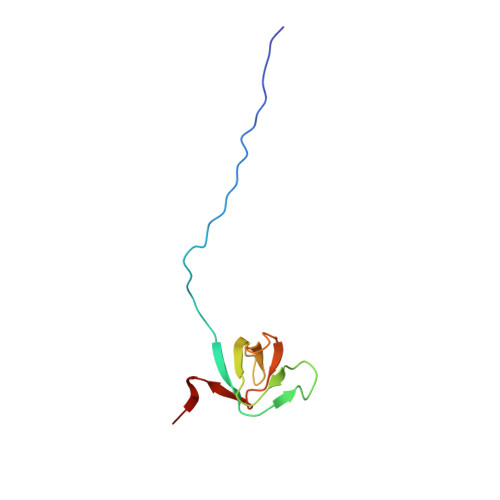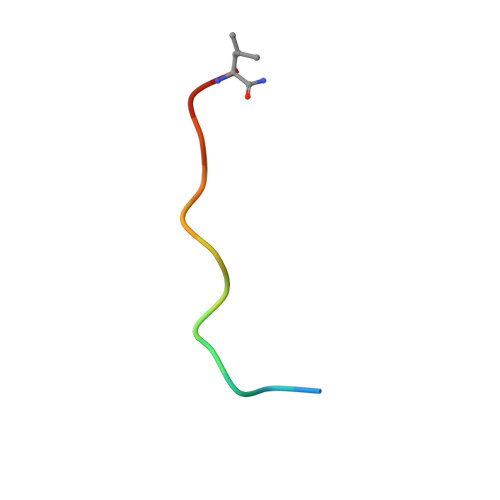Solution Structure of a Hck SH3 Domain Ligand Complex Reveals Novel Interaction Modes
Schmidt, H., Hoffmann, S., Tran, T., Stoldt, M., Stangler, T., Wiesehan, K., Willbold, D.(2007) J Mol Biol 365: 1517-1532
- PubMed: 17141806
- DOI: https://doi.org/10.1016/j.jmb.2006.11.013
- Primary Citation of Related Structures:
2OI3, 2OJ2 - PubMed Abstract:
We studied the interaction of hematopoietic cell kinase SH3 domain (HckSH3) with an artificial 12-residue proline-rich peptide PD1 (HSKYPLPPLPSL) identified as high affinity ligand (K(D)=0.2 muM). PD1 shows an unusual ligand sequence for SH3 binding in type I orientation because it lacks the typical basic anchor residue at position P(-3), but instead has a tyrosine residue at this position. A basic lysine residue, however, is present at position P(-4). The solution structure of the HckSH3:PD1 complex, which is the first HckSH3 complex structure available, clearly reveals that the P(-3) tyrosine residue of PD1 does not take the position of the typical anchor residue but rather forms additional van der Waals interactions with the HckSH3 RT loop. Instead, lysine at position P(-4) of PD1 substitutes the function of the P(-3) anchor residue. This finding expands the well known ligand consensus sequence +xxPpxP by +xxxPpxP. Thus, software tools like iSPOT fail to identify PD1 as a high-affinity HckSH3 ligand so far. In addition, a short antiparallel beta-sheet in the RT loop of HckSH3 is observed upon PD1 binding. The structure of the HckSH3:PD1 complex reveals novel features of SH3 ligand binding and yields new insights into the structural basics of SH3-ligand interactions. Consequences for computational prediction tools adressing SH3-ligand interactions as well as the biological relevance of our findings are discussed.
Organizational Affiliation:
Forschungszentrum Jülich GmbH, INB, Biomolecular NMR, 52425 Jülich, Germany.















